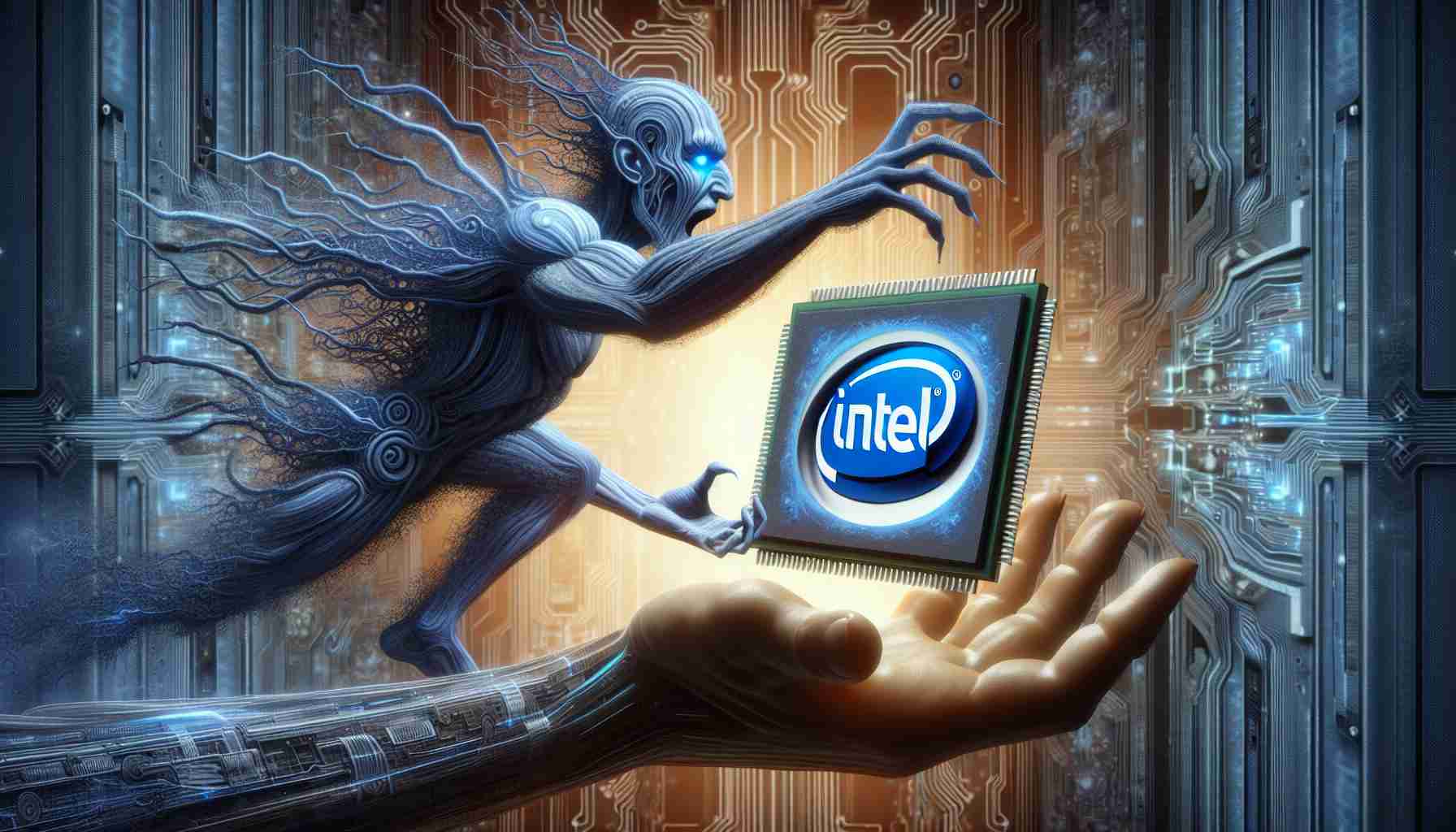A significant development in the tech industry is shaking both Silicon Valley and Wall Street: Qualcomm has expressed intentions to acquire Intel. Qualcomm, a leading chipmaker in the smartphone sector, aims to enhance its portfolio by integrating Intel, a powerhouse in PC technology, at a time when Intel is navigating its most challenging phase in over five decades.
Currently, Intel’s market valuation hovers around $93 billion, a steep decline from its past highs of over $200 billion due to major restructuring challenges. Despite the uncertainties clouding Intel’s financials, the company still holds a pivotal role in the AI-driven PC market, raising questions about its true market worth.
Upon the announcement, market reactions were mixed: Qualcomm’s stock fell by 3%, while Intel’s shares increased by 3%. This suggests a prevailing confidence in Intel’s potential resilience amid its current struggles.
The merger discussions have sparked interest due to the monumental nature of such a potential acquisition, anticipated to be the most significant in the tech realm for a decade. Qualcomm, known for its Snapdragon technology, is also experiencing robust growth in various sectors, notably automotive applications.
Both companies possess complementary strengths: while Qualcomm leads in mobile technologies, Intel maintains a stronghold in traditional computing and innovative architectures. Should this acquisition come to fruition, analysts believe it would create a powerhouse capable of influencing the future landscape of technology and computing.
Qualcomm’s Ambitious Move to Acquire Intel: An In-Depth Analysis
As the tech world braces itself for Qualcomm’s bold move to acquire Intel, several vital aspects of this potential mega-deal have come into focus. While the initial news has certainly stirred excitement, a deeper look reveals numerous factors that warrant attention.
What Are the Key Motivations Behind the Acquisition?
Qualcomm’s pursuit of Intel can be attributed to several strategic motives:
1. Diversification of Product Line: Qualcomm aims to broaden its reach beyond mobile chips into the burgeoning personal computer (PC) and server markets, where Intel remains a dominant player.
2. Leveraging AI Capabilities: With AI rapidly evolving, integrating Intel’s chipset technologies could allow Qualcomm to optimize its existing solutions and venture into new AI-driven applications.
3. Synergistic Benefits: The acquisition could yield substantial cost synergies by merging R&D efforts and consolidating manufacturing processes. Qualcomm’s strength in mobile technology complements Intel’s expertise in computing, which could create cutting-edge products in several domains, including Internet of Things (IoT) and edge computing.
Key Challenges and Controversies Surrounding the Acquisition
One of the critical challenges facing this acquisition is regulatory scrutiny. Given the market dominance of both companies in their respective sectors, antitrust regulations could pose significant hurdles. The potential reduction of competition in key tech markets may raise alarms among regulators worldwide.
Additionally, cultural integration is another vital challenge. Qualcomm’s aggressive, tech-driven approach may clash with Intel’s established corporate culture, which has faced criticisms over its adaptability and innovation speed in recent years.
What Are the Advantages and Disadvantages of the Acquisition?
Advantages:
– Consolidation of Resources: Merging the two companies could lead to enhanced R&D capabilities, driving innovation in both sectors.
– Market Expansion: Qualcomm can leverage Intel’s established PC and server presence to gain a strong foothold in these lucrative markets.
– Improved Competitive Edge: The combined entity could better compete against rivals like AMD and Nvidia, especially in the AI and data center domains.
Disadvantages:
– Regulatory Hurdles: Significant scrutiny from antitrust regulators could delay or prevent the deal from closing.
– Financial Risks: Qualcomm may face financial strain from acquiring Intel, which has been struggling with profitability.
– Cultural Integration Issues: Merging two large tech companies with different cultures could lead to internal strife, impacting employee morale and productivity.
What Questions Should Investors and Stakeholders Consider?
1. How will this acquisition impact Qualcomm’s existing business structure and market share?
– The integration could either enhance its growth potential or overwhelm its existing operations, depending on how effectively they manage the consolidation.
2. Will regulatory bodies approve the acquisition?
– The level of regulatory scrutiny and its outcomes will play a crucial role in determining whether the acquisition can proceed and under what conditions.
3. What will be the impact on innovation and product development in both companies?
– Stakeholders need to assess whether combining resources will lead to accelerated innovation or whether bureaucratic challenges will stifle creativity.
4. How will existing Intel customers react to the acquisition?
– If Qualcomm can assure Intel’s customer base of continued innovation and support, it may retain loyalty. However, any perceived instability could drive customers to competitors.
As the situation evolves, market analysts and tech enthusiasts alike will be monitoring developments closely. This acquisition is undoubtedly one of the most significant events in the tech sector in recent years, with the potential to reshape the landscape of chip manufacturing and beyond. For further insights, visit Qualcomm and Intel for detailed company information.























